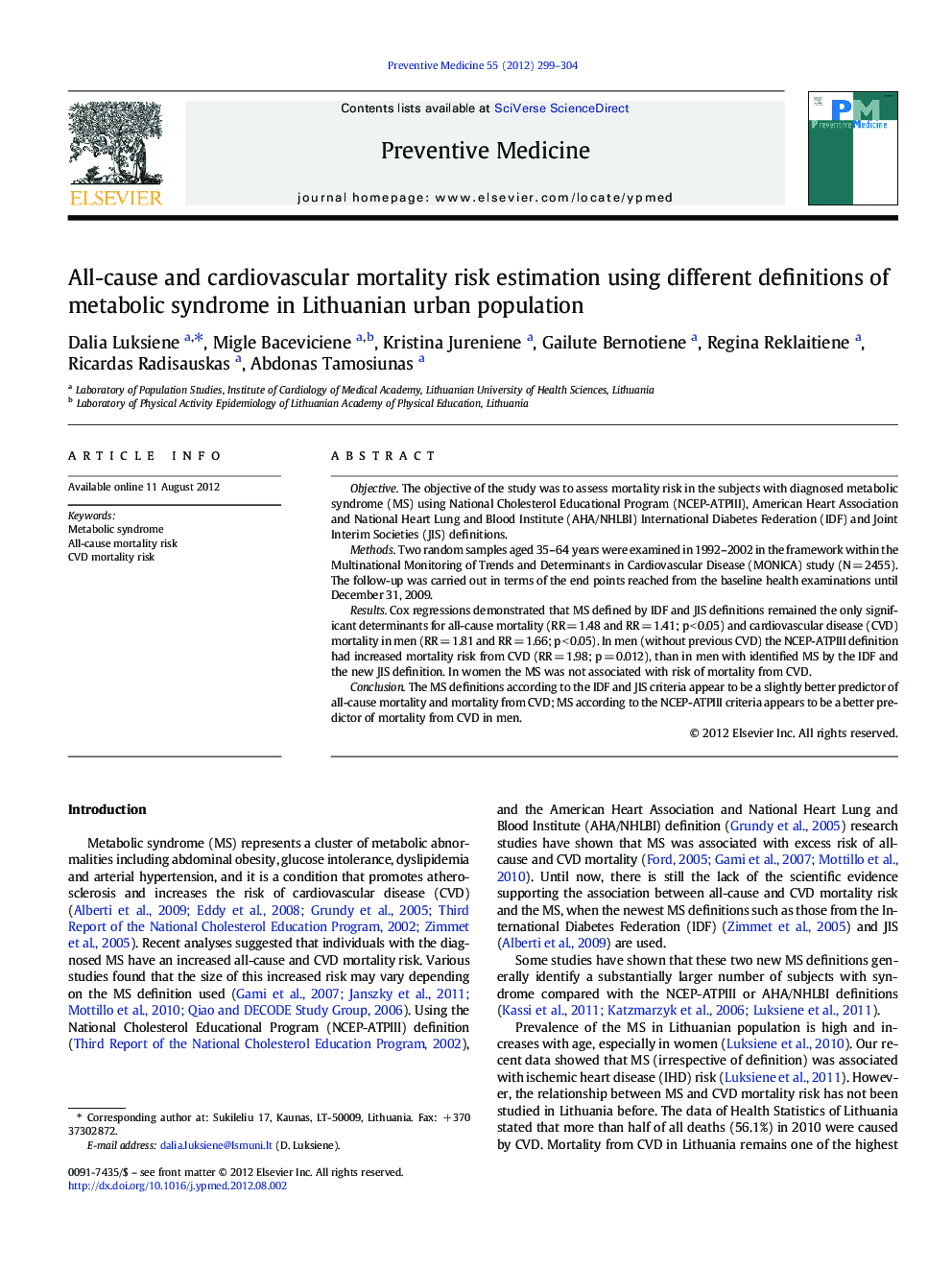| Article ID | Journal | Published Year | Pages | File Type |
|---|---|---|---|---|
| 3100756 | Preventive Medicine | 2012 | 6 Pages |
ObjectiveThe objective of the study was to assess mortality risk in the subjects with diagnosed metabolic syndrome (MS) using National Cholesterol Educational Program (NCEP-ATPIII), American Heart Association and National Heart Lung and Blood Institute (AHA/NHLBI) International Diabetes Federation (IDF) and Joint Interim Societies (JIS) definitions.MethodsTwo random samples aged 35–64 years were examined in 1992–2002 in the framework within the Multinational Monitoring of Trends and Determinants in Cardiovascular Disease (MONICA) study (N = 2455). The follow-up was carried out in terms of the end points reached from the baseline health examinations until December 31, 2009.ResultsCox regressions demonstrated that MS defined by IDF and JIS definitions remained the only significant determinants for all-cause mortality (RR = 1.48 and RR = 1.41; p < 0.05) and cardiovascular disease (CVD) mortality in men (RR = 1.81 and RR = 1.66; p < 0.05). In men (without previous CVD) the NCEP-ATPIII definition had increased mortality risk from CVD (RR = 1.98; p = 0.012), than in men with identified MS by the IDF and the new JIS definition. In women the MS was not associated with risk of mortality from CVD.ConclusionThe MS definitions according to the IDF and JIS criteria appear to be a slightly better predictor of all-cause mortality and mortality from CVD; MS according to the NCEP-ATPIII criteria appears to be a better predictor of mortality from CVD in men.
► We present the prevalence of metabolic syndrome defined by four definitions in adults. ► We examine the relationship between four metabolic syndromes and CVD mortality risk. ► We assessed the relationship between metabolic syndromes and all-cause mortality risk. ► Metabolic syndrome defined by IDF and JIS criteria increased all-cause mortality risk.
